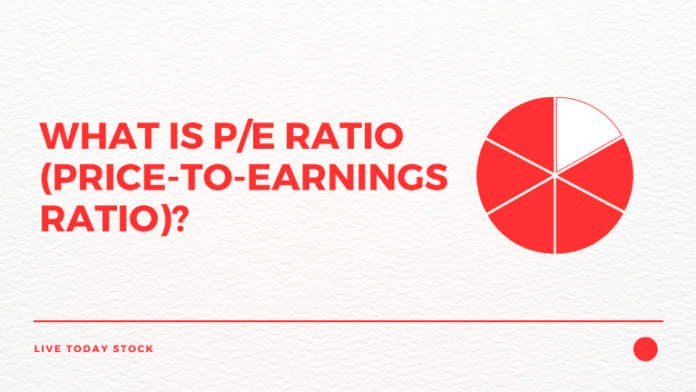P/E or Price-to-Earnings ratio is a fundamental financial metric widely used by investors to assess the valuation of a company’s stock. It provides insights into how much investors are willing to pay for each dollar of a company’s earnings. Let’s delve deeper into what P/E ratio is and how it is calculated.
Understanding P/E Ratio
P/E ratio is calculated by dividing the current market price of a company’s stock by its earnings per share (EPS). The formula for P/E ratio can be expressed as:
P/E Ratio=Market Price per Share/ Earnings per Share (EPS)
Interpreting P/E Ratio
- A high P/E ratio indicates that investors are willing to pay more for each dollar of earnings, suggesting that the stock may be overvalued or that investors are expecting high growth prospects for the company.
- Conversely, a low P/E ratio suggests that the stock may be undervalued or that investors have lower growth expectations for the company.
Types of P/E Ratio
- Trailing P/E Ratio: This ratio uses past earnings over the last four quarters to calculate the P/E ratio. It provides a historical perspective on the company’s valuation.
- Forward P/E Ratio: This ratio uses estimated future earnings to calculate the P/E ratio. It provides insight into the market’s expectations for the company’s future earnings potential.
Factors Influencing P/E Ratio
- Industry: P/E ratios can vary significantly between different industries due to differences in growth prospects, risk, and profitability.
- Growth Prospects: Companies with high growth prospects typically command higher P/E ratios as investors are willing to pay a premium for future earnings growth.
- Market Sentiment: Investor sentiment and market conditions can also influence P/E ratios, leading to fluctuations in stock valuations.
Conclusion
P/E ratio is a valuable tool for investors to assess the valuation of a company’s stock and make informed investment decisions. However, it should be used in conjunction with other financial metrics and qualitative analysis to gain a comprehensive understanding of a company’s investment potential.

